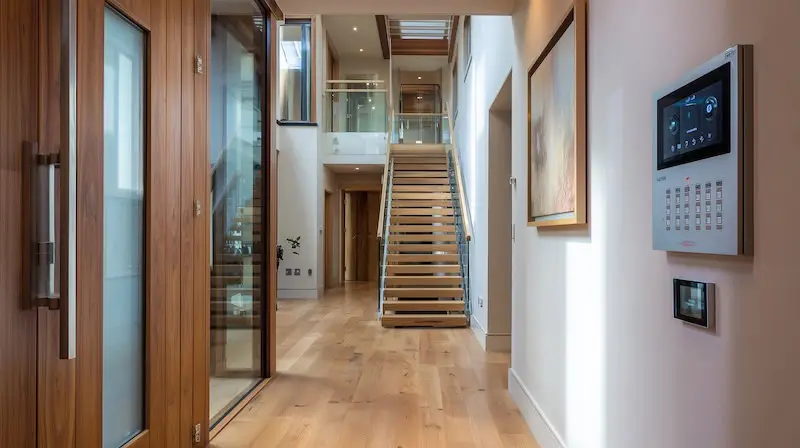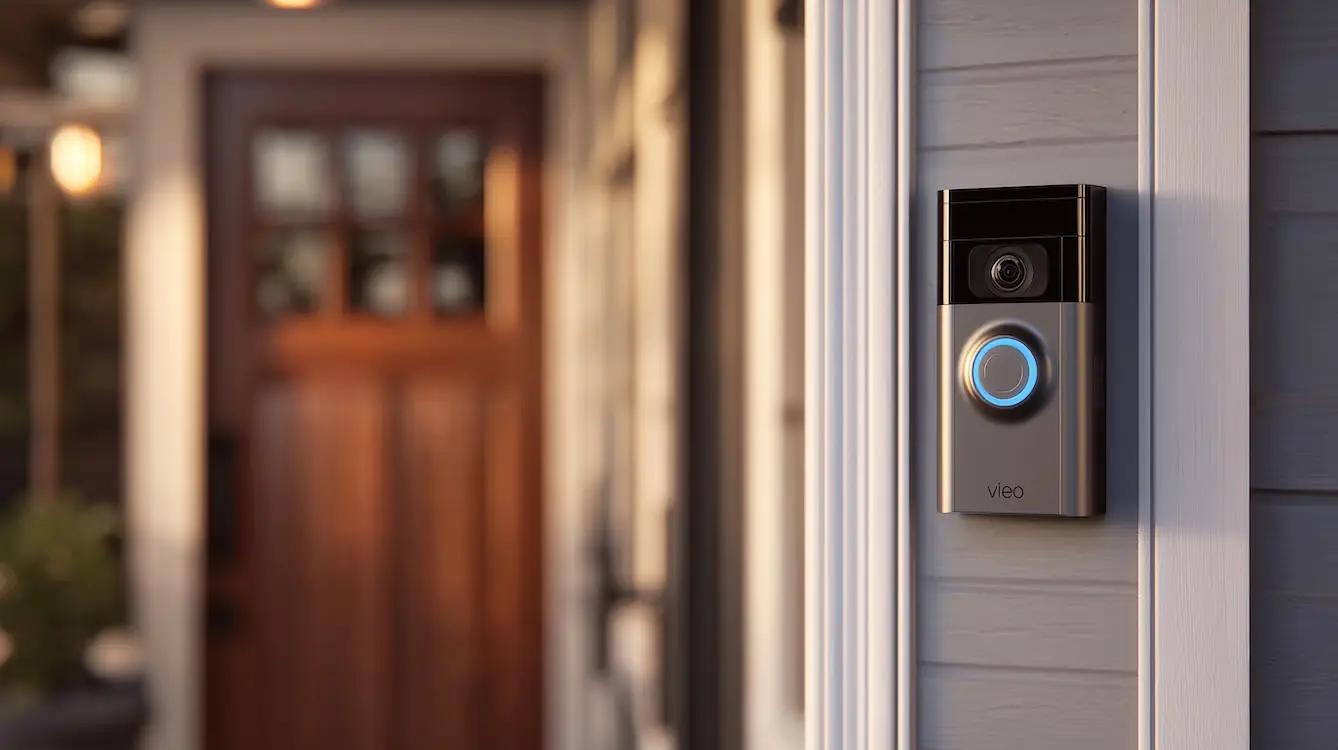A home should always feel like a sanctuary. Although advanced security systems are helpful, most safety improvements come from simple daily routines. Checking locks, being careful with valuables, and staying aware of your surroundings can all help you feel more secure. You don’t need to spend a lot to protect what matters most. A few thoughtful changes can make your home less appealing to opportunistic intruders and bring greater peace of mind.

Ten Practical Ways To Make Your Home Safer
1. Secure doors and windows properly: Many burglaries happen because a door or window is left unlocked. It’s easy to forget, especially in warm weather. Always make sure your doors and windows are safely secured, even when you’re at home. Get into the habit of locking up before bed and when you leave the house, even for a short time. For sliding or patio doors, be extra careful in summer. These are often left open for ventilation while valuables like laptops or phones are visible from outside, which can easily attract opportunistic thieves. If you’re in another room, close and lock the doors, and don’t leave electronics or handbags in plain sight.
2. Use outdoor lighting to deter unwanted visitors: Good lighting is one of the most effective deterrents. Motion-sensor lights make it harder for someone to approach unnoticed, while steady lighting near the front door improves safety when arriving home after dark. Solar-powered options are ideal for gardens, pathways, and driveways without increasing energy bills.
3. Keep ladders and tools locked away: Burglars often make use of items they find nearby. Ladders, bins, or garden tools can help them reach a window or climb over a fence. Store ladders in a locked shed or secure them to a wall with a chain and padlock. Keep shovels, hammers, and other heavy tools out of sight when not in use.
4. Secure fences, gates, and garden boundaries: Strong boundaries make your home less accessible. Fix any loose panels and keep hedges trimmed so neighbours can see if anything unusual happens. Use a padlock on side gates and check that the latch cannot be reached through gaps or holes. Gravel driveways and garden paths can also help by making footsteps audible.
5. Be cautious about what you share online: avoid posting about holidays or weekend trips until you are back. Publicly announcing that you are away can make your home more vulnerable. Check your social media privacy settings and refrain from posting clear views of your house or valuables.
6. Install alarms and understand their connectivity: Most home alarm systems and video doorbells use Wi-Fi, which makes them convenient but dependent on internet access. Choose models with a battery backup or mobile data connection so they continue working if your Wi-Fi is interrupted. Test alarms regularly and change passwords to keep your network secure.
7. Keep valuables out of sight: Do not leave laptops, phones, or keys within reach of windows or doors. If someone can see them from the street, it increases temptation. Use curtains or blinds at night, and keep packaging from expensive items out of view until refuse collection day.
8. Build connections with neighbours: A friendly neighbourhood is a safer one. Get to know your neighbours and look out for each other. They can collect parcels, notice suspicious activity, and help keep the area secure.
9. Check your home insurance and security requirements: Insurance policies often specify the types of locks or alarms needed for full cover. If your doors or windows do not meet these requirements, a claim could be reduced after a break-in. Review your policy and keep records if you have new locks installed by a professional locksmith.
10. Install smoke, heat, and carbon monoxide alarms: Security isn’t just about stopping intruders. Fire and gas safety are equally important. Place alarms on every level of your home and test them monthly. Many modern models connect, so if one sounds, they all do.
Know Your Locks
Understanding your locks is an easy but often overlooked part of home safety.
Yale night latches automatically lock when the door closes and are practical for everyday use, but should be paired with a mortice deadlock for enhanced protection. Choose a deadlocking night latch so it cannot be slipped open with a card.
Mortice locks are fitted inside the door and secured with a key. Look for the British Standard BS3621 mark, which most insurers prefer. Many now come with a thumbturn on the inside for quick unlocking in emergencies.
Euro cylinders are standard in modern uPVC or composite doors. Select anti-snap, anti-pick, and anti-bump cylinders to prevent forced entry.
Multipoint locks activate multiple bolts along the door when you lift the handle, offering extra resistance.
Banham locks use registered keys that can only be copied with proof of ownership and photo identification, such as a passport.
Smart locks enable remote control via your phone, but must include a manual override or key access for power outages or lost connections.
Remember to always lock from the inside at night. A door that is closed but not deadlocked can be pushed or slipped open quietly.

After a Break-in Nearby
It’s true that when one burglary occurs, others often follow in the same area. Intruders sometimes return to familiar streets, or other offenders notice the opportunity. When a local break-in takes place, take a few precautions immediately. Lock all doors and windows securely, add lighting near entrances, review your alarm settings, and check in with neighbours. Visible awareness alone often deters repeat attempts.
Fire Safety and Quick Escape
Never let security prevent you from escaping in an emergency. Always ensure you can unlock and open doors from inside without having to search for a key. Use thumbturn locks for quick exits. Keep keys in a known spot accessible to all family members. Practise unlocking doors in the dark so everyone knows what to do in case of a fire.
Final Notes On Home Safety
Adequate security depends on consistency, not cost. Properly secure doors, conceal tools out of sight, and remain alert to potential attractants. Combine sturdy locks with lighting, alarms, and helpful neighbours for optimal safety. Safety and comfort go hand in hand when your home is both welcoming and protected.
Frequently Asked Questions About Home Safety
How often should you replace locks?
If you have just moved into a new property, change the locks straight away. Afterwards, check them every few years or sooner if keys go missing or the locks feel loose. Weather and wear can weaken fittings over time, so it is wise to ask a locksmith to inspect them during routine maintenance.
Is it safer to leave the lights on when you leave?
A few strategically placed lamps on timers can make your home appear occupied, but leaving lights on continuously can create the opposite impression. Smart plugs or timer switches that operate lights at different times help the house look genuinely lived in.
Do visible cameras or alarms truly prevent burglars?
Yes, research shows that visible security devices, such as CCTV cameras, doorbell cameras, and alarm panels, discourage opportunistic intruders.
What is the best way to secure patio doors?
Patio and sliding doors can be vulnerable points. Fit locks on both the top and bottom, and use an anti-lift device to prevent them from being forced off the track. Always close and lock them when you leave the room, especially in summer when they are often left open with valuables in sight.
How can I make my home safer without spending much?
Small changes can have a significant impact. Lock doors and windows, use motion-sensor lighting, keep tools out of sight, and get to know your neighbours. A vigilant community and consistent routines often prevent more incidents than costly systems.
Always consult a professional about home safety.
For more information, visit Neighbourhood Watch or Crimestoppers Property Safety for guidance. You might also like this article: Ten ways to make your house move go smoother.
